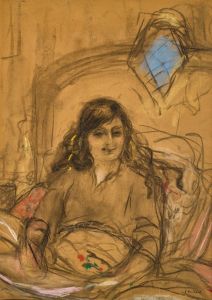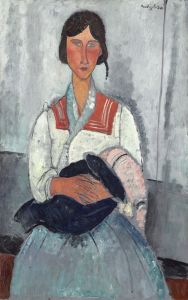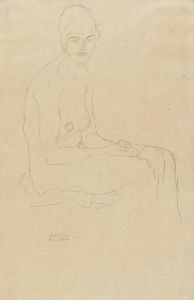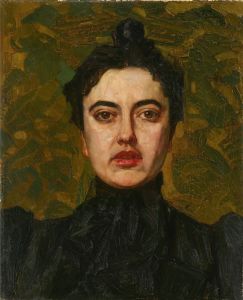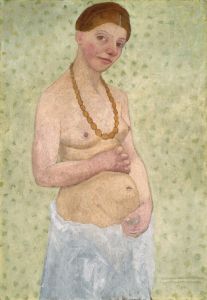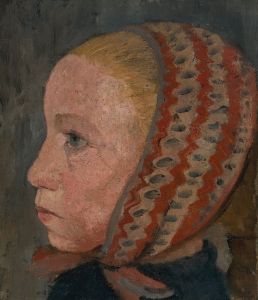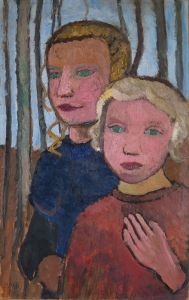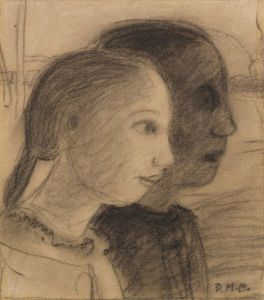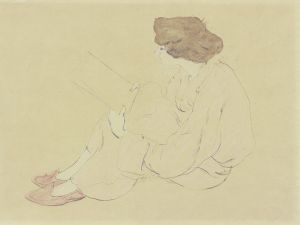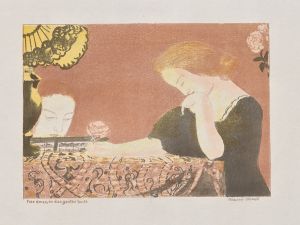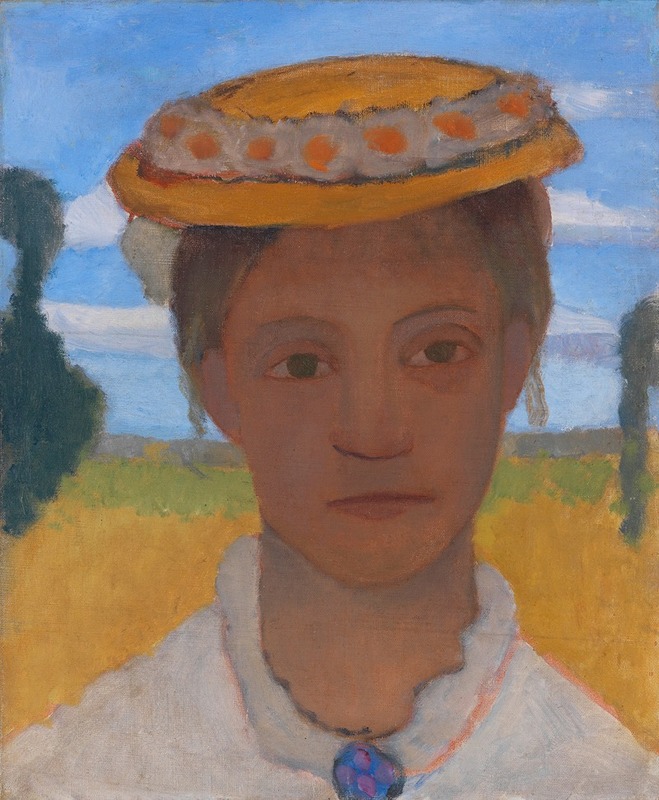
Kopf der Schwester Herma mit Marienblümchenkranz auf dem Hut
A hand-painted replica of Paula Modersohn-Becker’s masterpiece Kopf der Schwester Herma mit Marienblümchenkranz auf dem Hut, meticulously crafted by professional artists to capture the true essence of the original. Each piece is created with museum-quality canvas and rare mineral pigments, carefully painted by experienced artists with delicate brushstrokes and rich, layered colors to perfectly recreate the texture of the original artwork. Unlike machine-printed reproductions, this hand-painted version brings the painting to life, infused with the artist’s emotions and skill in every stroke. Whether for personal collection or home decoration, it instantly elevates the artistic atmosphere of any space.
Paula Modersohn-Becker was a pioneering German painter and one of the most important figures of early expressionism. Her work, "Kopf der Schwester Herma mit Marienblümchenkranz auf dem Hut" (translated as "Head of Sister Herma with a Daisy Wreath on the Hat"), is a testament to her unique style and innovative approach to portraiture. This painting is part of Modersohn-Becker's broader body of work that often focused on intimate and personal subjects, frequently depicting women, children, and scenes from everyday life.
Modersohn-Becker was born on February 8, 1876, in Dresden, Germany. She spent much of her artistic career in the artists' colony of Worpswede, where she was surrounded by other artists who were seeking to break away from the traditional academic art styles of the time. Her work is characterized by its bold use of color, simplified forms, and a focus on the emotional and spiritual aspects of her subjects.
"Kopf der Schwester Herma mit Marienblümchenkranz auf dem Hut" is a portrait that exemplifies Modersohn-Becker's ability to capture the essence of her subjects with minimalistic yet expressive techniques. The painting features Herma, Modersohn-Becker's sister, adorned with a wreath of daisies on her hat. This choice of adornment is significant, as daisies are often associated with innocence and purity, themes that resonate throughout Modersohn-Becker's work.
The painting reflects Modersohn-Becker's interest in the inner life of her subjects, as she often sought to portray more than just their physical appearance. Her approach to portraiture was revolutionary for its time, as she moved away from the detailed realism that was prevalent in the 19th century and instead embraced a more abstract and expressive style. This shift allowed her to convey deeper emotional truths and connect with the viewer on a more profound level.
Modersohn-Becker's work was influenced by her exposure to various art movements during her travels, particularly her time spent in Paris. There, she encountered the works of Paul Cézanne, Vincent van Gogh, and the early Fauves, which inspired her to experiment with color and form. Despite her innovative approach, Modersohn-Becker's work was not widely recognized during her lifetime. It was only after her untimely death at the age of 31 in 1907 that her contributions to modern art began to be fully appreciated.
Today, Paula Modersohn-Becker is celebrated as a trailblazer in the art world, and her paintings are held in high regard for their emotional depth and pioneering style. "Kopf der Schwester Herma mit Marienblümchenkranz auf dem Hut" is a fine example of her ability to blend the personal with the universal, capturing the essence of her subjects while also pushing the boundaries of traditional portraiture.
The painting is part of the collection at the Paula Modersohn-Becker Museum in Bremen, Germany, which is dedicated to preserving and showcasing her work. The museum provides insight into her life and artistic journey, offering visitors a chance to explore the legacy of an artist who was ahead of her time and whose work continues to inspire and influence artists today.





